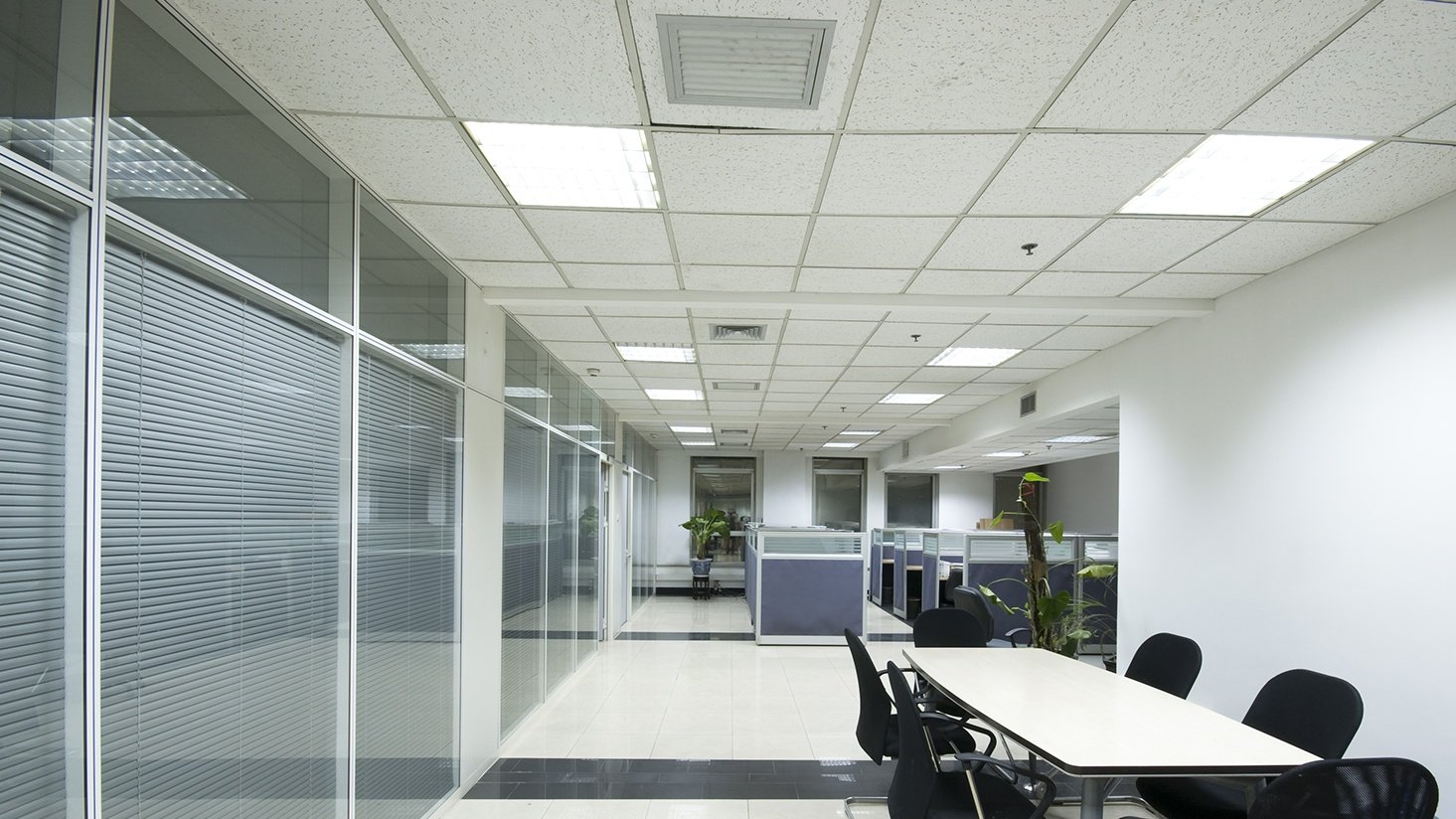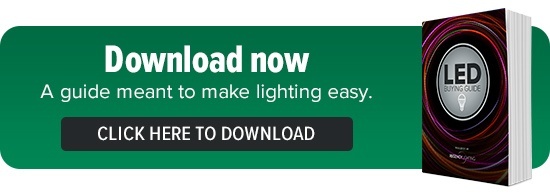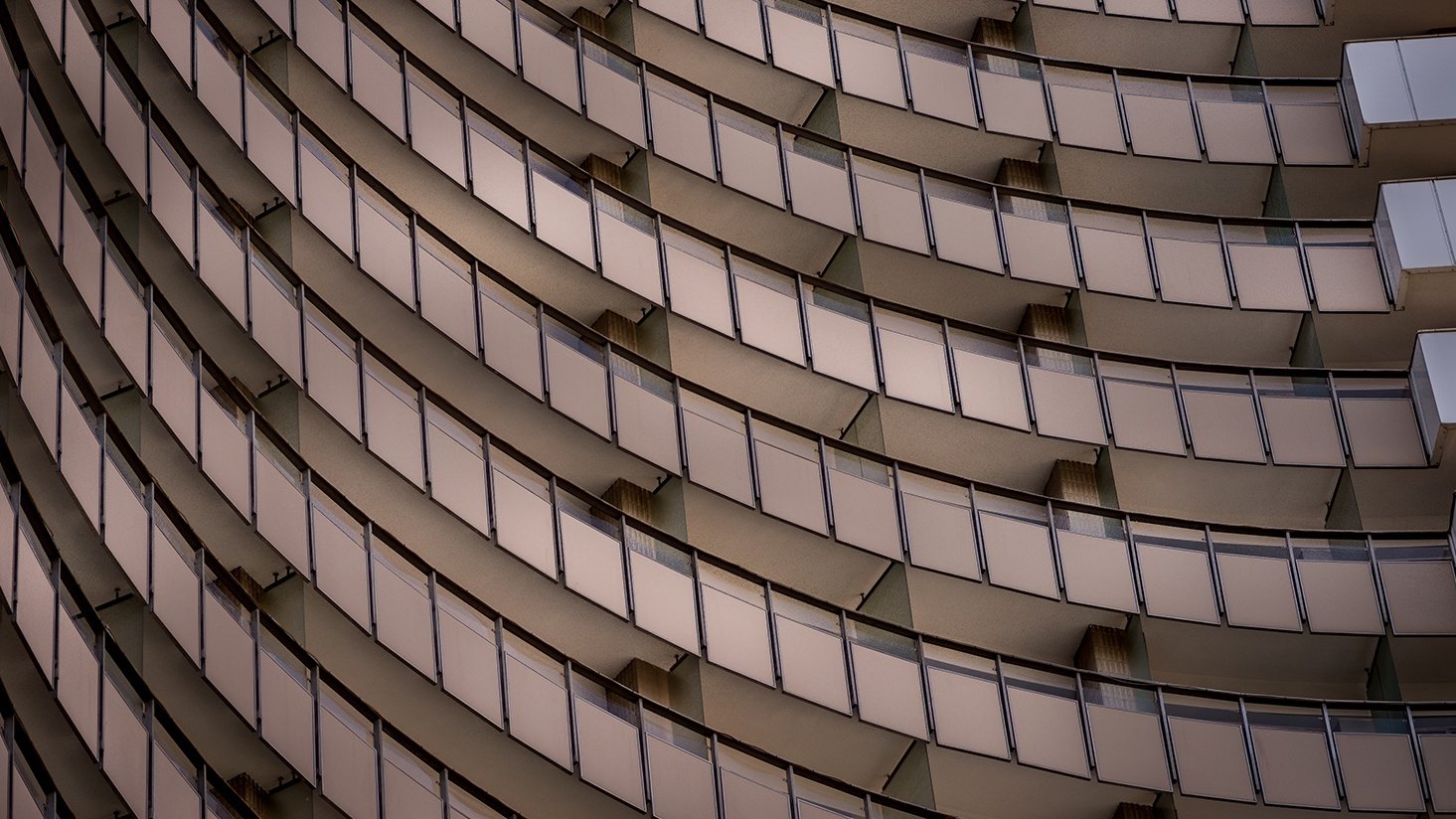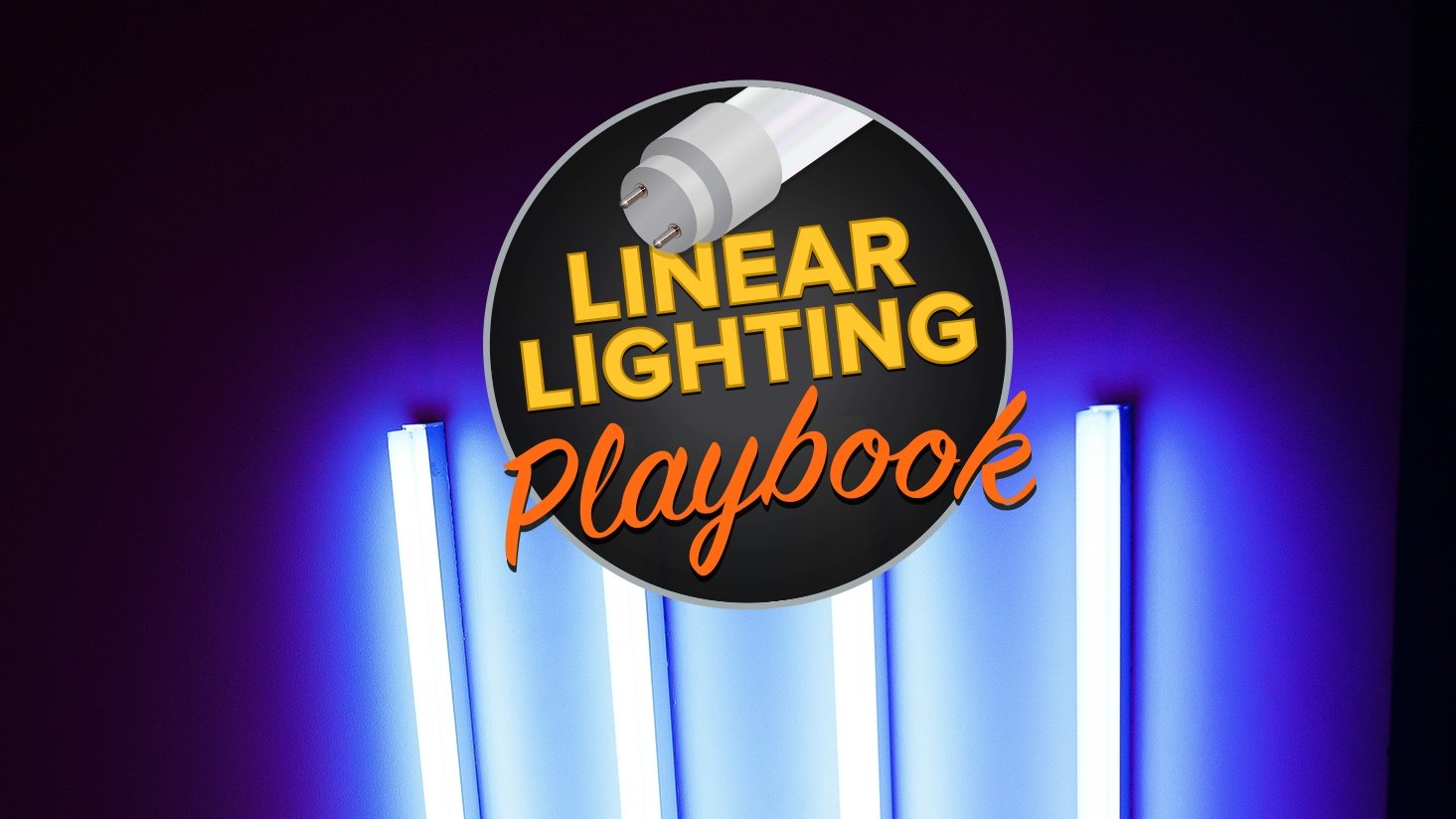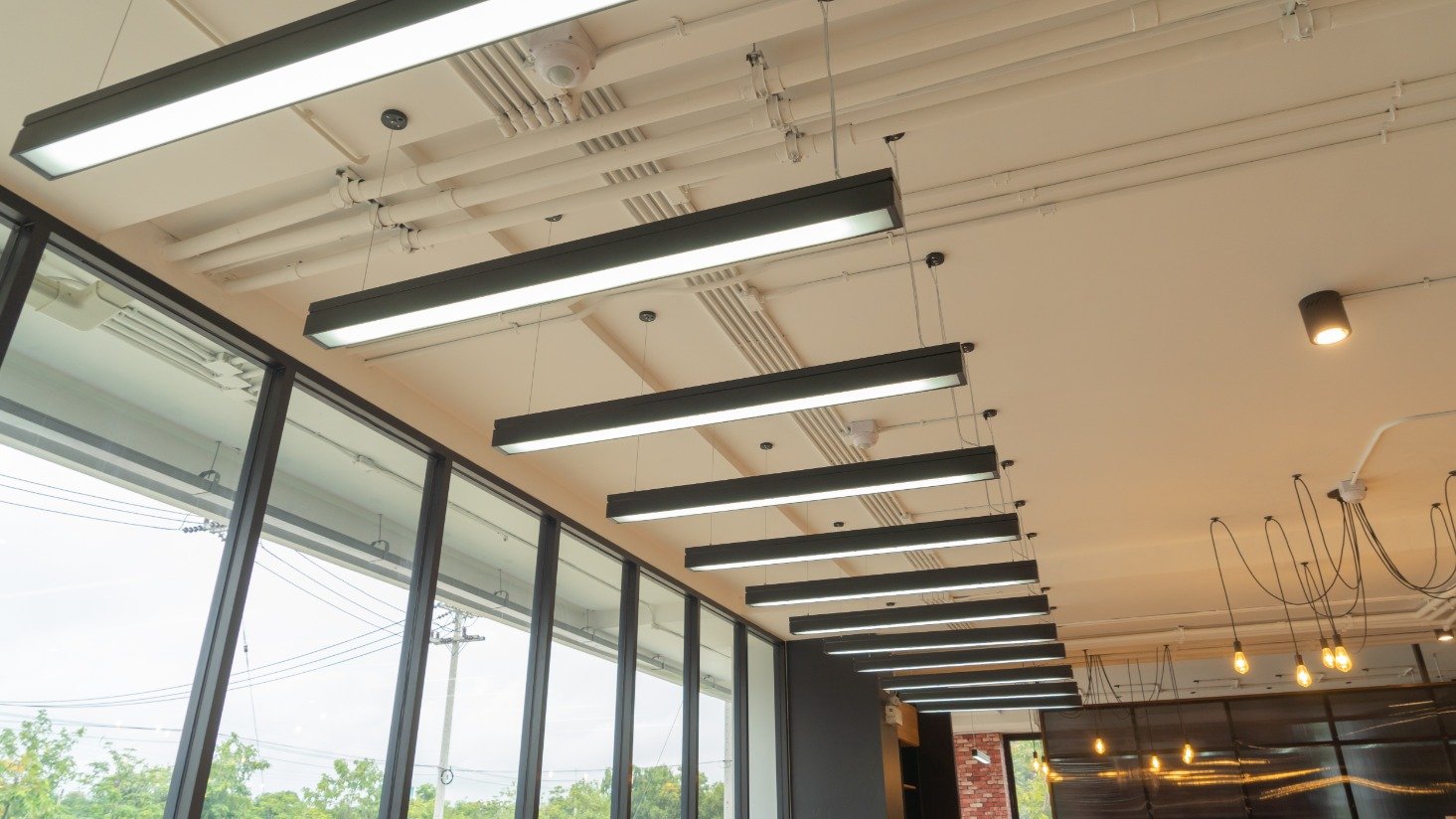Linear LED vs. linear fluorescent: A look at the pros and cons of different linear tubes
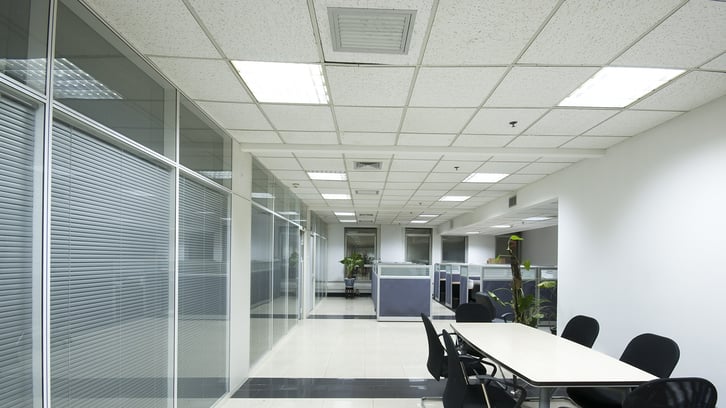
Linear fluorescent lamps have been a staple in the lighting industry for their efficiency, long life, and relatively low up-front cost. We sell as many of them as just about anything else.
With so many of our customers using linear fluorescents, we're frequently asked about opportunities to retrofit the lamps to LED.
We’ve covered similar topics in other posts which you may want to read, but for now, we want to focus on the pros and cons of linear fluorescent and linear LED tubes.
Linear LED tubes come in a few varieties – plug-and-play, ballast bypass, remote driver, and some combinations of these configurations, making it possible to go LED in linear fixtures designed for fluorescents, with ballasts and all.
Are LED tubes the best option for replacing your fluorescents?
A few years ago, it seemed like linear LEDs were beginning to pop up everywhere by companies that hadn’t been around long enough to back up their quality and warranty claims. On top of that, most of the LED tubes were pretty expensive. Unproven product combined with a long wait for ROI equated to rare recommendations to retrofit to linear LED.
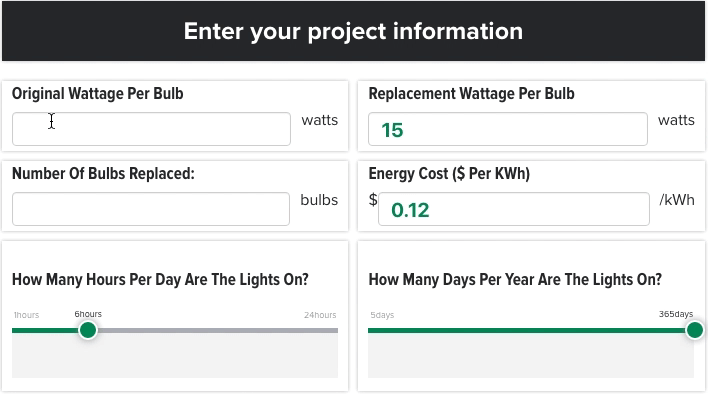
Today, however, the landscape looks different. The most reputable manufacturers in the lighting industry have a whole range of linear LEDs that go from value-line to high-output, and nearly everything in between.
Read more: 'Plug-and-play vs. ballast-bypass and other linear LED solutions'
As a result, there is a good linear LED for nearly any application, though we still find situations when linear fluorescents remain a great lighting choice.
Here is a breakdown of the pros and cons of both linear LED and linear fluorescent tubes:
Linear LED pros and cons
Linear led pros
Energy savings
Energy savings is perhaps the top benefit of LED lighting. A switch from linear fluorescent to linear LED could save you between 45 and 65 percent in energy costs. This is typically enough to get to a reasonable return on investment in most areas.
Long life
An average linear LED will last for around 50,000 hours, meaning it loses about 30 percent of its light output after more than 10 years. There are some value-line LED lamps that carry shorter life ratings, but you’ll likely still see an improvement over the average linear fluorescent, which lasts around 20,000 hours.
Environmental impact
LED lamps contain no mercury. This is one advantage, along with low energy usage, that makes linear LED tubes the clear environmentally-friendly choice.
Easy installation and low maintenance
While linear LEDs come in many different types, the ones we typically recommend work with the existing linear fluorescent ballast. When it comes time to
Read more: 'How a proactive approach can alleviate common lighting maintenance headaches'
Strong warranty
Today’s LED manufacturers offer three-to-five-year warranties on their products, resulting in peace of mind, knowing you shouldn’t have to mess with the lighting for a few years. (Read below for linear fluorescent warranties — they exist, too!)
Linear LED cons
Price
High prices are the main drawback with linear LEDs. Today, prices are much more reasonable than they once were, but if
Overwhelming options
Another negative for linear LEDs is the seemingly endless sea of manufacturers and options to choose from. If you are set on LED, but you’re overwhelmed by the choices, we have some resources for you.
Recall questions
Linear LEDs came under close scrutiny over the last couple of years for product safety recalls. You may have heard about the recalls, which were initiated by fire risks or melted tubes. Fortunately, manufacturers seem to have resolved the concerns, and today’s products are extremely safe. That said, it’s still worth properly vetting a manufacturer to make sure to choose a company that will stand by its product.
Linear fluorescent pros and cons
Linear fluorescent pros
Price
One of the top reasons linear fluorescents are so popular is the amount of light and relatively long life you get for a very low up-front cost. If
Easy installation
It doesn’t get any easier than replacing an existing linear fluorescent with a new one. The retrofit is a direct replacement.
Long life
Linear fluorescents last, on average, about 20,000 hours. In the realm of lighting, this is still considered a long-life product, even though most LEDs will outlast most linear fluorescents. This is also a good place to note that some linear fluorescents – with the right ballast combination – can last up to 90,000 hours, which is pretty impressive.
Simpler product selection
Linear fluorescents are much easier to select than linear LEDs. In general, you select a reputable manufacturer, color temperature, and wattage, and you’re off to the races.
Warranty availability
If you are replacing the lamps and ballasts at the same time, some manufacturers will give a warranty on the linear fluorescent system. We tend to think of warranties as an LED benefit, but they also apply here.
Linear fluorescent cons
Environmental impact
Mercury – the environmentally toxic metal that’s found in every fluorescent tube – is one of the most common concerns about fluorescent lighting. Levels of mercury have decreased in most fluorescent tubes, but the technology simply doesn’t work without some amount of mercury.
Energy usage
While linear fluorescents are more efficient than incandescent or halogen bulbs, they aren’t as efficient as LED. If energy savings is your top priority, you should seriously consider linear LED.
Life rating
Although there are some ultra long-life fluorescent tubes, the average life rating is 20,000 hours, which doesn’t compare with the typical 50,000-hour LED.
Lumen depreciation
Fluorescent lamps almost always experience color variation and fading. So, at different stages of the lamp's life, different light levels will be produced. This will eventually create dark corners and inconsistent lighting in your space.
Want to know more about your replacement options for T12 fluorescents? Click here.
LED or fluorescent: Which lamp is right for you?
Generally speaking, if
If, however, you’re looking for maximum energy savings or mercury-free lighting, start shopping LED.
We're here to help you understand all your options and, should you choose to invest in higher-priced LED lamps, we can help you to calculate your payback and ROI.
